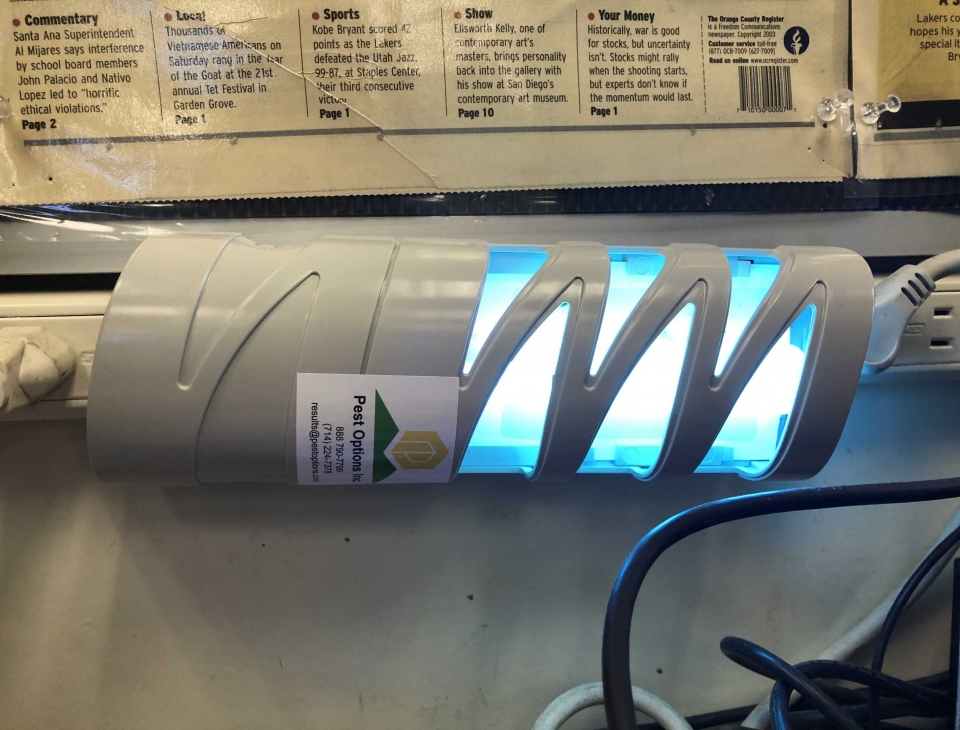Sunny Hills students and staff are finding themselves victims of the recent Orange County invasion of two species of mosquitoes — the Asian tiger and yellow fever — with one classroom being supplied with insect traps.
“All the bites that I’ve had from this past summer have swollen up a lot,” said senior Kaitlin Keefe, who has as of this week sustained 14 bites below one of her knees. “It’s weird because normally, mosquito bites don’t swell up.”
Advanced Placement Government teacher Greg Del Crognale also mentioned the bug attacks to his students in his fourth period class during the second week of school.
“The mosquitoes harmed my wife more than me,” Del Crognale said. “The itching from the bites was unbearable for her, and we purchased many different products, hoping the pain would decrease.”
The Orange County Mosquito and Vector Control District reported that these insects are known for being an invasive species that came from a container ship from Asia and South America, according to ocregister.com. They usually bite mostly below the knee, hence the term used to describe them, “ankle biters.”
The Aedes mosquitoes also complete their life cycle in a matter of days, making it dangerous for people that they bite because of their ability to establish any place as their home until someone kills the eggs or the insects themselves, according to latimes.com.
“The mosquitoes only need a little bit of water to breed, so we put screens on all our drains and have a monthly service to pay [an exterminator],” Del Crognale said. “The best thing to do is to make sure everybody in your neighborhood has no standing water, which will make it harder for the mosquitoes to breed.”
As evident in Del Crognale’s home, the mosquitoes are able to breed in a body of water as small as a water bottle cap, unlike other mosquitoes that need a large body of water to thrive, according to the California Department of Health’s website.
In addition to their unique qualities, the Aedes mosquitoes can also suck blood from their prey in full daylight while native mosquitoes bite during the nighttime.
Some students have experienced these attacks on campus.
“I was walking across the grass near the parking lot at school, and I literally caught a mosquito sucking on my knee,” said senior Patrick Ordoñez, who has five bites so far. “I was so shocked because it was so bright outside.”
Not only can one find these with the help of sunlight, but one can distinguish these quarter-inch bugs by looking at their distinct black and white stripes and long tails.
To fight these blood-suckers on campus, administrators contacted the Orange County Mosquito and Vector Control office to limit mosquitoes by using water-based public health mosquito control products, principal Allen Whitten said.
In addition, the district’s exterminator, Pest Options Inc., installed on Tuesday two Gardner Fly Web Fly Traps in Room 138, where Tommy Li teaches his English and journalism classes.
Each “trap” is a device with a light that attracts insects; the bulb is attached to a sticky substance that prevents bugs or other critters from escaping.
“They seem to be a good deterrent so far, as neither I nor any of my two daughters who come to school here have experienced any more bites since they were plugged in to an outlet,” said Li, who reported the problem of mosquito bites in his room Oct. 3. “I’m so glad that the district was able to respond to my concern so quickly.”
Freshman Evan Kirkland has also taken to putting on insect repellent before coming to campus.
“I think it’s better to be safe than sorry in this case,” said Kirkland, who has eight bites so far.
Besides such measures, Vector Control officials say that another possible chance for these ankle-biters to go away would be cooler weather.
“Nothing annoyed me more than having five swollen mosquito bites at a time,” Ordoñez said. “I wish winter would come faster so that they go away, hopefully.”



















